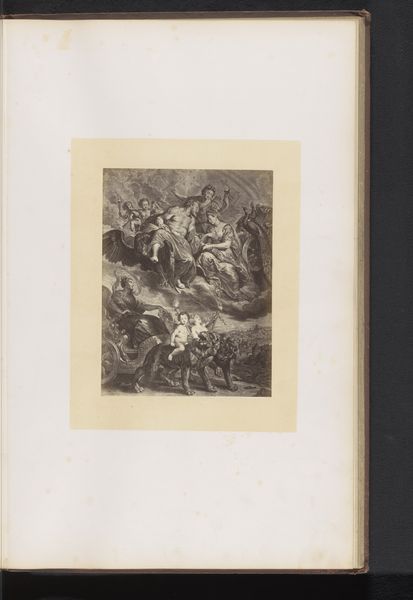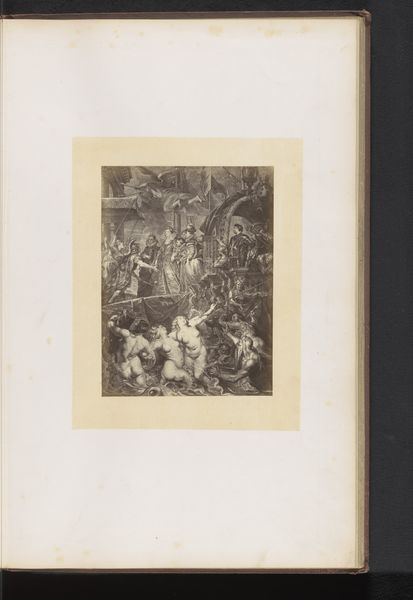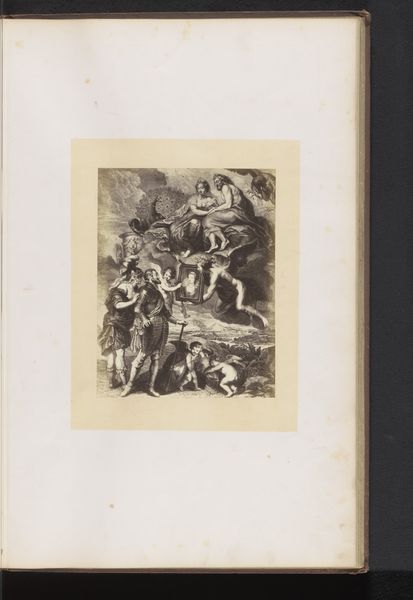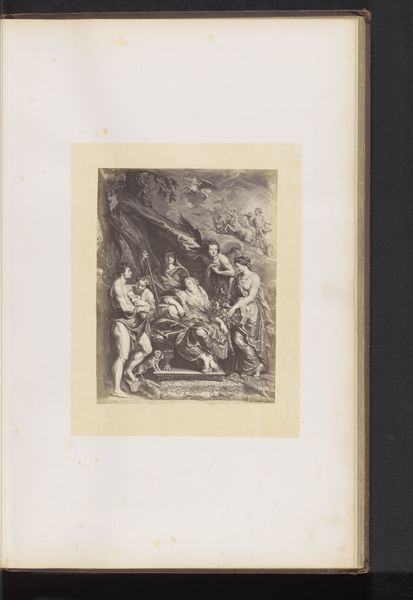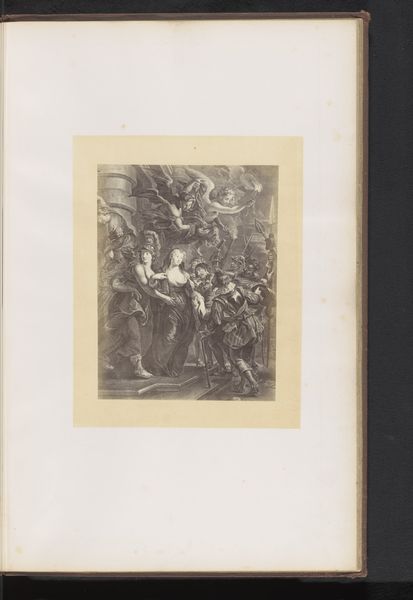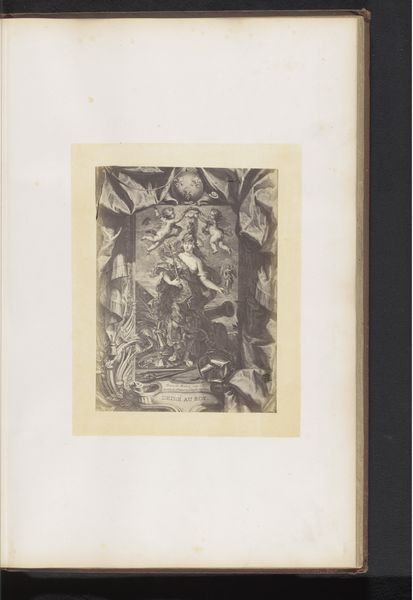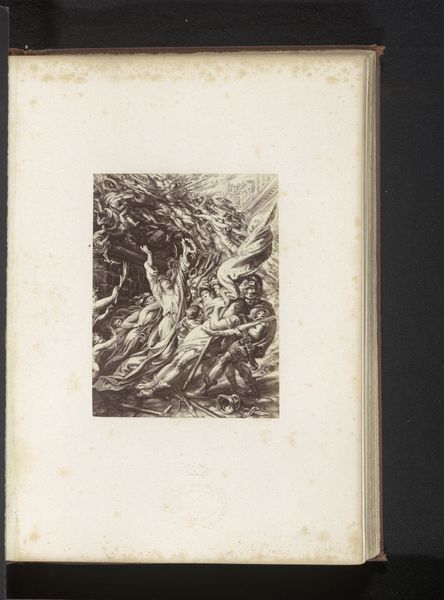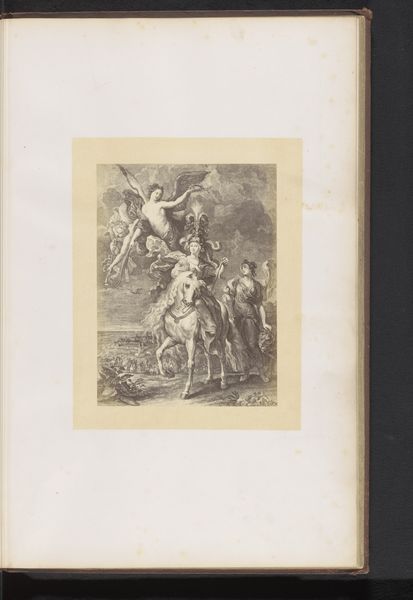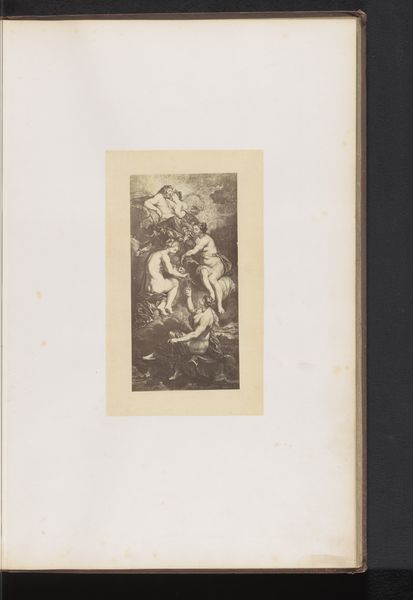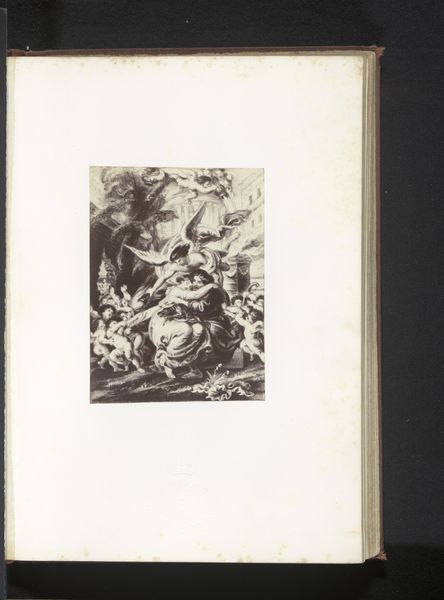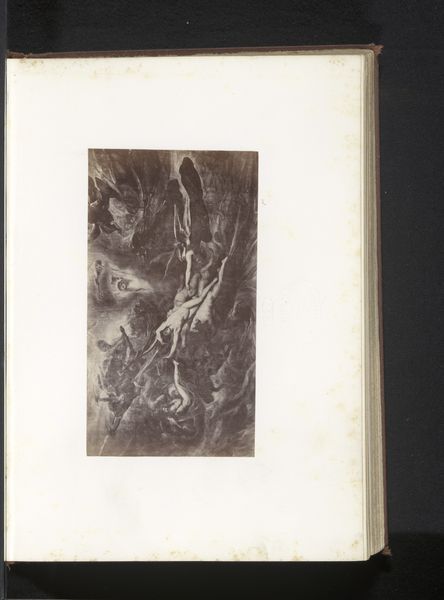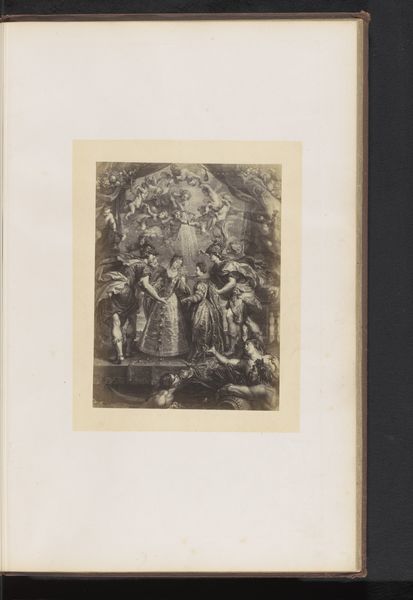
Fotoreproductie van een gravure van De geboorte van Maria de'Medici door Jean-Marc Nattier, naar het schilderij door Peter Paul Rubens before 1864
0:00
0:00
dechampsetcie
Rijksmuseum
Dimensions: height 202 mm, width 151 mm
Copyright: Rijks Museum: Open Domain
Curator: This photogravure presents an image titled "Fotoreproductie van een gravure van De geboorte van Maria de'Medici door Jean-Marc Nattier, naar het schilderij door Peter Paul Rubens," dating back to before 1864. The original Rubens, of course, much earlier. It’s currently housed in the Rijksmuseum. Editor: It’s quite dynamic. The upward surge of figures caught in monochromatic gradients gives the impression of clouds and celestial energies swirling about. Curator: Rubens, and therefore also Nattier in the engraving, employed allegory quite liberally. Do you pick up on some of the symbolic languages deployed here? Editor: Well, I immediately notice the muscular figure reclining at the base. He seems to represent a river god, based on the flowing water from his urn, doesn’t he? It anchors the entire composition, providing a stark contrast to the more ethereal figures above. Semiotically, this illustrates foundations, or perhaps fertility of the region. Curator: Indeed. The river god grounds the scene in a specific locale, rooting the birth within the tangible world. More generally, though, this scene overflows with figures that would have resonated profoundly at the time – signs of prosperity and legitimized power through lineage. This birth was far more than a private family affair; it was a public event laden with expectation and consequence for France. Editor: You’re absolutely right. And observing the figures surrounding the mother, notice the repetition of certain compositional shapes - round, billowing forms in the clouds are echoed in the seated position of the earth-bound deities - which almost locks together the ethereal and mortal realms. The use of chiaroscuro truly captures the grandeur of Baroque style. Curator: Beyond artistic and stylistic brilliance, this engraving signifies something important about cultural memory. Prints like these helped circulate images and solidify collective narratives. It made works, such as those by Rubens, more accessible to a wider audience. The symbolism persists, informing identity even through reproduction. Editor: It makes one consider the way history is so often retold, reshaped. Studying the formal components, one almost overlooks the deep ideological functions it represents and served. Curator: Precisely. The layers of history intertwined within this single print are fascinating. Editor: Indeed, food for thought and much more to explore here.
Comments
No comments
Be the first to comment and join the conversation on the ultimate creative platform.
